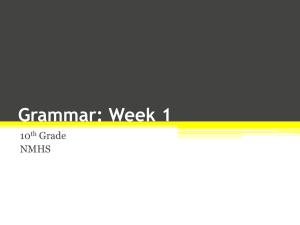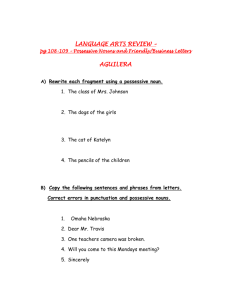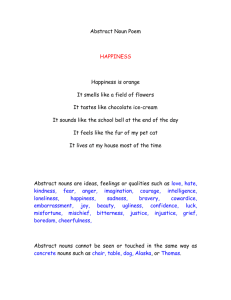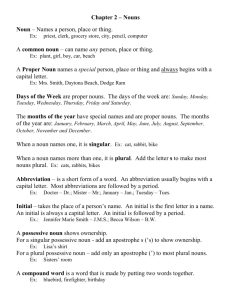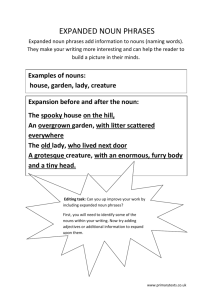Study Guide for Nouns Quiz - Fort Thomas Independent Schools
advertisement
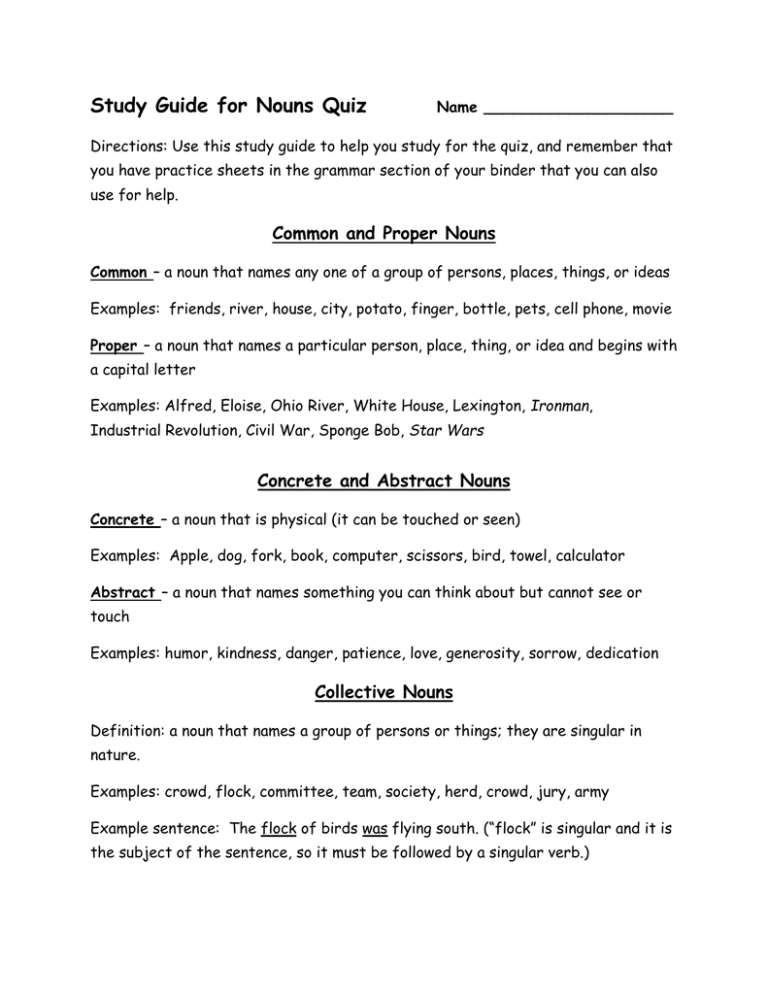
Study Guide for Nouns Quiz Name ____________________ Directions: Use this study guide to help you study for the quiz, and remember that you have practice sheets in the grammar section of your binder that you can also use for help. Common and Proper Nouns Common – a noun that names any one of a group of persons, places, things, or ideas Examples: friends, river, house, city, potato, finger, bottle, pets, cell phone, movie Proper – a noun that names a particular person, place, thing, or idea and begins with a capital letter Examples: Alfred, Eloise, Ohio River, White House, Lexington, Ironman, Industrial Revolution, Civil War, Sponge Bob, Star Wars Concrete and Abstract Nouns Concrete – a noun that is physical (it can be touched or seen) Examples: Apple, dog, fork, book, computer, scissors, bird, towel, calculator Abstract – a noun that names something you can think about but cannot see or touch Examples: humor, kindness, danger, patience, love, generosity, sorrow, dedication Collective Nouns Definition: a noun that names a group of persons or things; they are singular in nature. Examples: crowd, flock, committee, team, society, herd, crowd, jury, army Example sentence: The flock of birds was flying south. (“flock” is singular and it is the subject of the sentence, so it must be followed by a singular verb.) Singular and Plural Nouns Singular Noun – a word for 1 noun Plural Noun – a word for 2 or more of that noun Rules for changing a singular noun into a plural noun: Most nouns form their plurals by adding “s.” Examples: dogs, footballs, buildings, stadiums, girls Nouns that end in “s”, “sh”, “ch”, or “x” form their plurals by adding “es”. Examples: dresses, dishes, witches, boxes Nouns that end in a consonant and “y”, form their plurals by changing the “y” to “i”, and adding “es”. Examples: cities, daisies Some nouns ending in “o” form their plurals by adding “es”. Examples: hero=heroes, echo=echoes, tomato=tomatoes Some nouns ending in “o” form their plurals by adding “s”. Examples: radio=radios, piano=pianos, solo=solos Some nouns ending in “f” or “fe” change the “f” to “v”. Then they add “es” to form their plurals. Examples: life=lives, leaf=leaves, knife=knives Some nouns make a new word when they are made plural. Examples: ox=oxen, woman=women, goose=geese, mouse=mice Count and Non-Count Nouns Count – a person, place, or thing that can be counted (There can be more than one of them.) TIP: Ask yourself, “How many ______ are there?” If the plural form of the noun makes sense in that sentence, then it is a count noun! Examples: books, pen, table, student, building, house, answer, exam, shoe, stadium Non-Count – a person, place, or thing that you cannot count Examples: water, rice, clothing, air, luggage, intelligence, love, leather, air, homework
